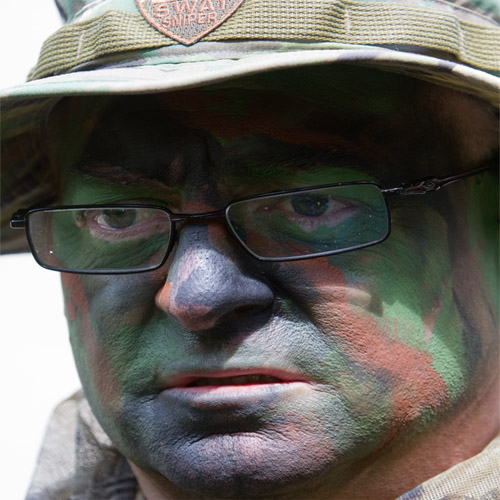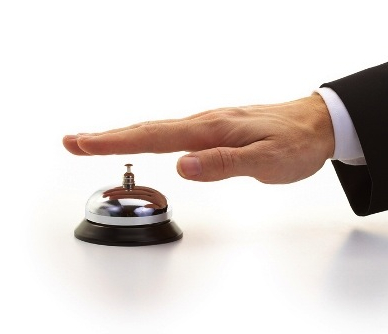
Kitty_K
5 Years Experience
Los Angeles, CA
Female, 30
I am a Los Angeles based decorator and have worked on a range of projects from an Academy Award winning feature to commercials for brands like Bank of America and Kay's Jewellers. An average day on the job involves me visiting high-end stores and prop houses in Los Angeles to photograph and price furniture, lighting fixtures, drapery, and art. I am responsible for running a crew and collaborating creatively with the director, production designer and cinematographer. Ask me anything!
These are the most important items I use for my job which sometimes travel with me
1. Laptop
2. Measuring tape
3. Digital Camera
4. USB flash drive
5. Debbie's Book
6. Cellphone with prop house/industry contacts
7. Bin full of tapes, paints, adhesives, drawing pencils
8. Business cards
9. Reference books (photography, films and film directors, art, case study houses, etc)
I also collect a lot of antiques and knick knacks and love to take photographs so I have old cameras, and lots of old polaroids and found images decorating my personal work space.
A union decorator can not work as a set dresser unless if the project in question is non union. A union decorator can work as a buyer on a union project with the condition that they are being paid at their same rate as a decorator.
The number one thing you have to know about being a good leadman is in the name of the position: You have to have all the qualities of a strong LEADER. Being a leadman requires having the ability to direct a crew of people and staying in control. You have to be organized and have the ability to strategize - you have to know how to break down a one line into a man day schedule and be able to estimate how many set dressers are needed on each day. A leadman is also generally required to bring his own kit complete with items like tapes, ladders, furny blankets, paint, adhesives, hand tools, etc. You are the face of the set dressing crew and must interface with the locations department, transpo department and line producer to get things done, so you cannot be timid or anti-social. The best leadmen are cool headed, organized, masters of strategy and aren't afraid to give orders.
I once made the mistake of picking a set dresser to be my leadman on a feature film. He had an AMAZING resume with big tv shows and blockbuster films. While his resume as a set dresser was impressive, he had never been a leadman on a film and did not have the personality for it either. As a result I was under a lot of stress during the first two weeks of filming trying to do my job as well as his.
My first warning sign was that he did not know how to break down a schedule and expected me to sit down and help him when that is not part of my job. He also didn't know how to provide clear instructions to the crew. The set dressers would call me and say they didn't have wrap out paperwork or photos to reset a location after we were done filming. In addition, set dressing items did not get returned on time to the prop house or picked up on time. I constantly had to watch him to make sure that things didn't slip through the cracks. Eventually I had to let him go because he was jeopardizing the success of the film and the line producer, production designer and myself were all unhappy with him.
A set dresser is basically a glorified furniture mover - the set dresser is required to pick up the furniture from the vendor and then place it within the set according to the floorplan or instructions that the decorator provides. No credentials are required. What I look for in a set dresser is a basic knowledge of tools - how to use a level, a screwgun, measuring tape, someone who is physically fit enough to move a sofa or a large piece of art work, someone with a positive, enthusiastic "can-do" attitude. Also someone who thinks before they act and takes special care with the items they are moving.
I do expect a level of professionalism from my set dressers: A set dresser who talks or socializes at inappropriate times, takes naps on set when it's not break time, has a nasty attitude, is sloppy or hasty in moving or packing items causing them to get damaged or broken, shows up late, or does not make sure they have clean hands before handling furniture are people who go on my DO NOT HIRE list.
School Bus Driver
 Why don't school buses have seat belts?
Why don't school buses have seat belts?
SWAT Team Commander (Retired)
 How do you decide whether to try and kill a hostage taker?
How do you decide whether to try and kill a hostage taker?
Hotel Front Desk Agent
 Have you ever had a suicide occur in one of your rooms?
Have you ever had a suicide occur in one of your rooms?
A set decorator is the interior designer to the set - we choose all the furniture, lighting, art, fabrics, carpeting and decorative tchotchkies to create the environment for the characters. We must pay attention to subtle visual cues that help tell the story behind that space or character - something simple like a chair tells the viewer about the owner of the chair, what the character's social status is, the time period, the location, etc.
The on-set dresser is the person who adjusts and resets the set dressing and furniture for the camera and lighting department once filming begins. They are not part of the prep process and they do not have any creative input in the look of the set. Their job is restricted to when the camera turns on and their job ends when the camera shuts off. They are in charge of maintaining continuity and the integrity of the decorator's original vision. They also make sure that things like plastic water bottles, script pages and coffee cups are not left on the set when the camera starts rolling (this is one of my pet peeves and you would be surprised how often crew people treat the set like it's their living room) The on-set dresser - in my opinion - is one of the most important people in the art department because they shoulder the responsibility of how the set finally looks once the camera starts rolling. Any little mistake like a stray water bottle or a chair positioned in the wrong place can reflect poorly on the whole art department.
It depends on the budget of the project. I have a friend who was a buyer for a 30 min network comedy show and she was given a credit card with a $20,000 limit. They didn't care what she spent as long as the pieces she found were right for the characters. I've heard of 60 min television dramas that are much stingier than this and will cut corners wherever they can.
You already have a good start since you have been a set stylist for photoshoots - from personal experience I would have to say being a decorator for still shoots is MUCH more taxing than working on a feature film. You have more time to plan and I've found that the personalities you have to deal in film as opposed to photography are less aggravating. One of your main currencies in the film industry is who you know so I would suggest joining the SDSA and attending one of their monthly parties. You will be able to mingle with established decorators for film and television and make new connections.
-OR-
 Login with Facebook
Login with Facebook (max 20 characters - letters, numbers, and underscores only. Note that your username is private, and you have the option to choose an alias when asking questions or hosting a Q&A.)
(A valid e-mail address is required. Your e-mail will not be shared with anyone.)
(min 5 characters)
By checking this box, you acknowledge that you have read and agree to Jobstr.com’s Terms and Privacy Policy.
-OR-
 Register with Facebook
Register with Facebook(Don't worry: you'll be able to choose an alias when asking questions or hosting a Q&A.)